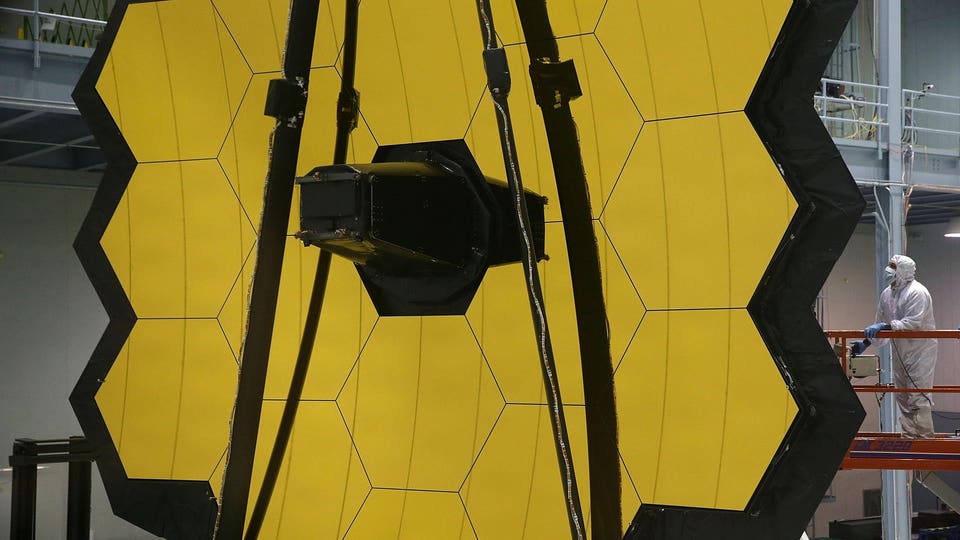NASA’s James Webb Space Telescope has detected water vapour in a “planet-forming” area of a distant star, the agency announced Monday, in a major discovery that marks the first time astronomers have found extraterrestrial water in an area with planets on the cusp of being formed, shedding light on how life could have begun on Earth.

Key facts
- Astronomers using the NASA James Webb Space Telescope detected the super-hot water vapour in an inner ring of gas and dust around a distant star known as PDS 70 which shares a remarkable amount of similarities with the sun.
- PDS 70 is roughly three-quarters the mass of the sun, and at 5.4 million years old is relatively close in age to the sun, which is roughly 4.6 billion years old.
- The water vapor, detected using the James Webb Space Telescope’s mid-infrared instrument, was also found at a distance from the star similar to the Earth’s distance from the sun (93 million miles), signaling the area could be conducive to life.
- Giulia Perotti, an astronomer at Germany’s Max Planck Institute for Astronomy who led the study told Space.com that knowledge about PDS 70 provides crucial information about how planets in the sun’s solar system likely formed, and confirms that water is present in a region where “planets similar to Earth may be assembling.”
Big number
370. That’s how many light-years PDS 70 is located from the Earth according to NASA (2.175 quadrillion miles).
Contra
Scientists have for decades debated how water reached the Earth, and whether it could have made its way to the planet in the same way it might have on other rocky planets or smaller exoplanets in other solar systems.
One theory posits that grains of ice and dust slowly accumulate to form planets, though in the Earth’s case, scientists believe it may have been too hot for water vapour to have condensed into a liquid, meaning it likely evaporated.
Other theories point to asteroids and comets that could have shot ice to the Earth, or that chemical interactions between magma and molecular hydrogen could have led to water on Earth.
Key background
Since its launch in December 2021, NASA’s $US10 billion James Webb Space Telescope has captured jaw-dropping cosmic images using a near-infrared camera, revealing extraterrestrial phenomena never before seen in such clarity.
Those images include the so-called Pillars of Creation, a towering area of dust and gas 6,500 light years away, as well as an hourglass-shaped star producing area—which had previously been captured in 1995 by the Hubble Telescope, though not in the same detail.
The NASA telescope also spotted what astronomers believe to be so-called dark stars—supermassive stars up to 10 billion times brighter than the sun that had been thought to be purely theoretical.
This article was first published on forbes.com and all figures are in USD.


